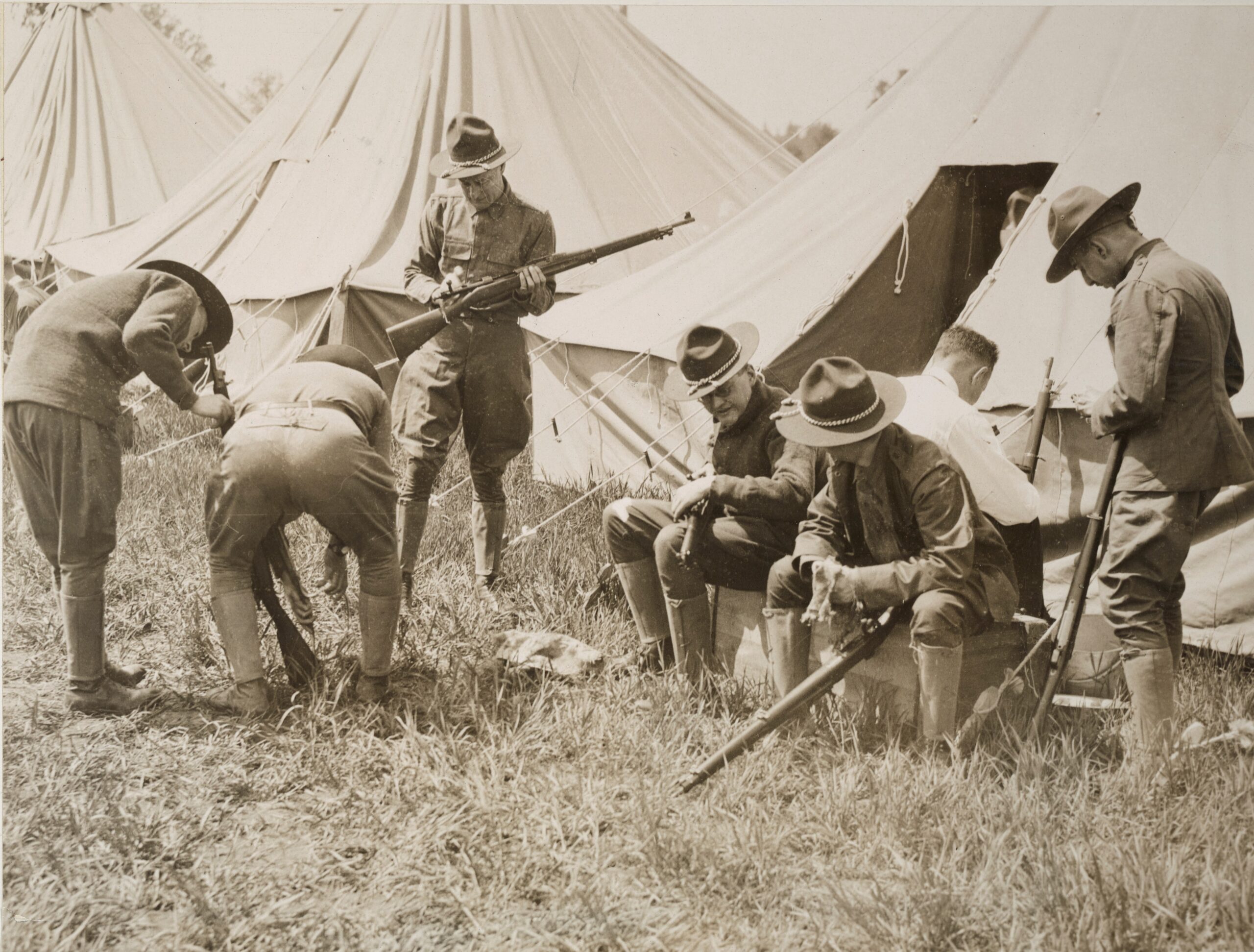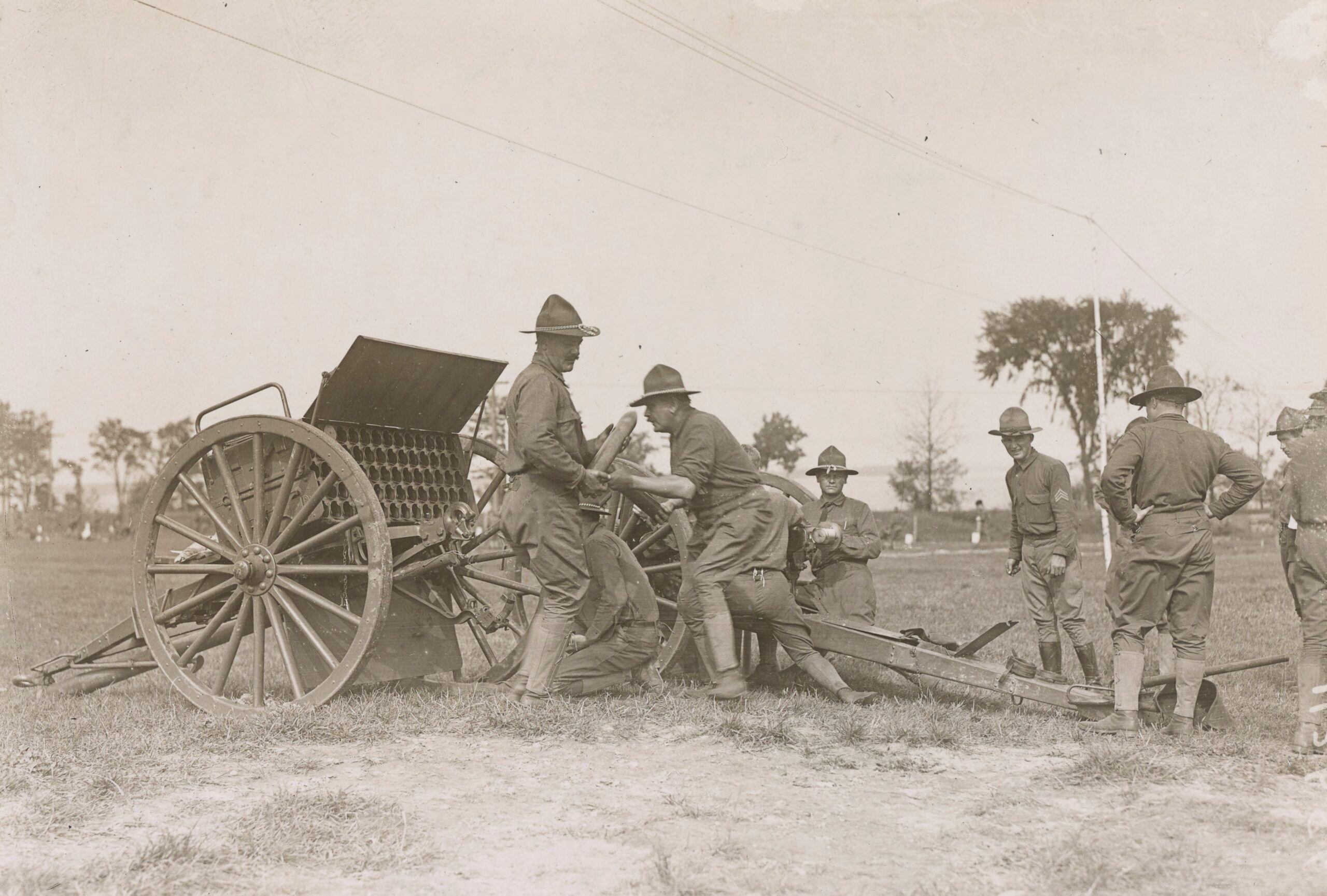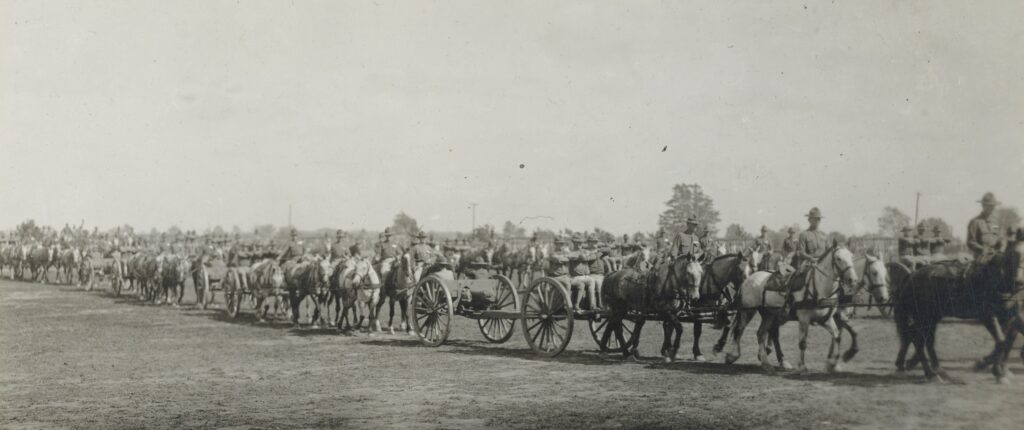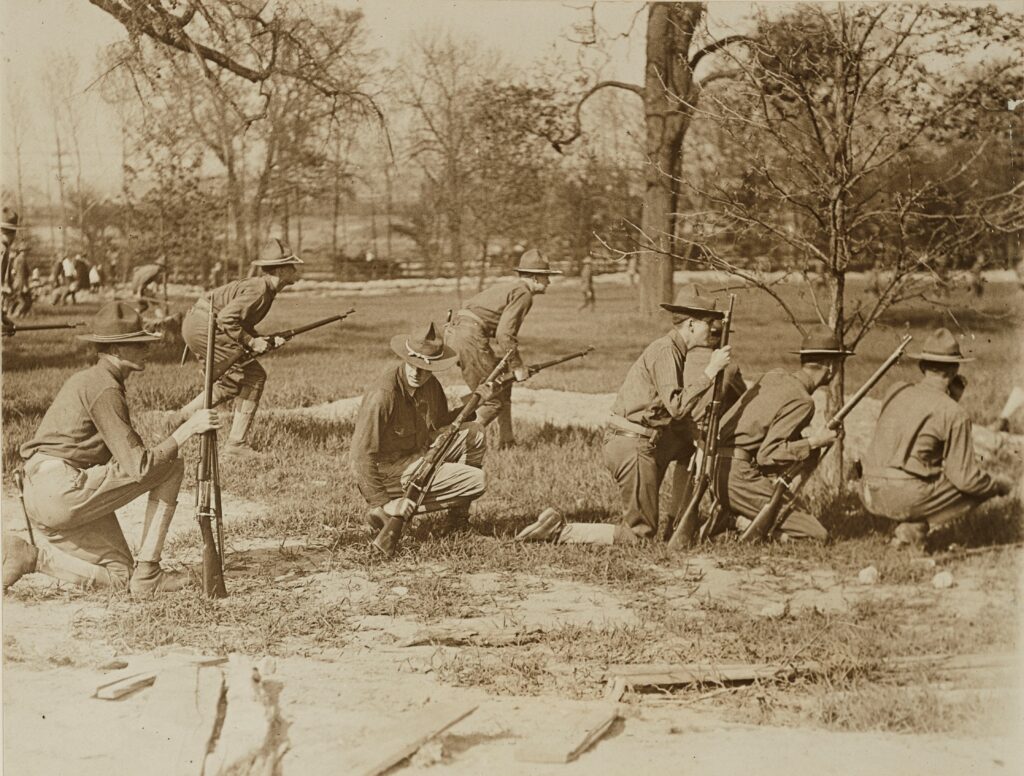When it came to enlisted soldiers, the manpower problem was fixed with relative ease. Between April and August 1917, over 437,000 men eagerly enlisted in the Regular Army and the National Guard.1 A draft was implemented after enlistment numbers declined, and the size of the U.S. military continued to expand throughout 1917 and 1918. In order to train these new recruits and draftees, the War Department established thirty-two training camps, known as cantonments, across the country, each large enough to house and train a division, approximately 27,000 men.2
Recruiting and training officers proved more difficult. Officers required more specialized instruction and the War Department needed as many as possible. The Army and National Guard had a little under 9,000 trained officers in 1917 and many of these officers had very little combat experience. The War Department had four avenues for new officers: the Plattsburg camps, Officer Training Camps (OTCs), Central Officers’ Training Schools (COTS), and the Reserve Officers Training Program (ROTC).
The Plattsburg Camps
Started by General Leonard Wood in 1913, the idea behind the Plattsburg camps was to provide basic training for businessmen and students in high school and college. These camps were put on during the summer in Plattsburg, New York, and civilians who attended were instructed in close order drill, basic marksmanship, marching, horsemanship, engineering, ordnance via artillery practice, and basic field skills such as setting up a camp and rifle maintenance. Despite over 8,000 graduates of the Plattsburg program being commissioned as officers, these camps proved to be of little value to the War Department, as graduates had to go through Officer Training Camps before being commissioned.3


Officer Training Camps
Once the U.S. entered the war, the War Department created Officer Training Camps (OTCs) to train new officers. OTCs were established throughout the country, and only provided three-months of instruction before men were commissioned officers. These officers were known as “Ninety-Day Wonders” and constituted a majority of combat officers at the battalion level or lower.4 Initially, not all graduates of OTCs were commissioned as officers, in an effort to have a reserve of trained men, but this would change as the war progressed. In total, about seventy-four percent of all wartime officers came from OTCs.5

Central Officers’ Training Schools
In June 1918, the War Department replaced OTCs with Central Officers’ Training Schools (COTS). Five COTS were established and focused on three areas of instruction: infantry, field artillery, and machine guns. The three infantry COTS were located at Camp Gordon, Georgia, Camp Lee, Virginia, and Camp Pike, Arkansas. The field artillery COTS was established at Camp Zachary Taylor, Kentucky, and the machine gun COTS was at Camp Hancock, Georgia. Rather than training for three months like the OTCs groups, COTS classes were four months long. However, given the late start of COTS and the Armistice in November 1918, a majority of the officers commissioned from COTS only had between two and three months of training.6

Reserve Officers’ Training Corps
The Reserve Officers’ Training Corps (ROTC) was created as a part of the National Defense Act of 1916. The program was designed to provide military training to male college students over minimum period of two years, though many colleges and universities who adopted the program offered four-years of instruction. Upon graduation, members of the ROTC would be commissioned into the United States Infantry Reserve as second lieutenants and would hold their commissions as a reserve officer for a minimum of five years.7 While it is possible that some members of the ROTC were deployed to Europe, the program’s late introduction and adoption hindered its overall contributions to the war effort.

Notes:
- Richard S. Faulkner, Pershing’s Crusaders: The American Soldier in World War I (Lawrence, Kansas: University Press of Kansas, 2017), 15.
- Matt Luther, “Fort Jackson, South Carolina,” On Point: The Journal of Army History 25, no. 4 (June 2020): 46.
- Leonard Wood, Plattsburg Training Camp, July 1916 (Poughkeepsie, N. Y.: Thompson Illustragraph Co., 1916), https://catalog.hathitrust.org/Record/100191550; Richard S. Faulkner, The School of Hard Knocks: Combat Leadership in the American Expeditionary Forces, C.A. Brannen Series 12 (College Station, Texas: Texas A&M University Press, 2012), 28.
- Richard S. Faulkner, Pershing’s Crusaders: The American Soldier in World War I (Lawrence, Kansas: University Press of Kansas, 2017), 260.
- Richard S. Faulkner, The School of Hard Knocks: Combat Leadership in the American Expeditionary Forces, C.A. Brannen Series 12 (College Station, Texas: Texas A&M University Press, 2012), 31.
- Richard S. Faulkner, The School of Hard Knocks: Combat Leadership in the American Expeditionary Forces, C.A. Brannen Series 12 (College Station, Texas: Texas A&M University Press, 2012), 82-86.
- Harry Downing Temple, The Bugle’s Echo: A Chronology of Cadet Life at the Military College at Blacksburg, Virginia, The Virginia Polytechnic Institute, vol. III (1912-1920) (Blacksburg, VA: The Virginia Tech Corps of Cadets, Inc., 1998), 1970.